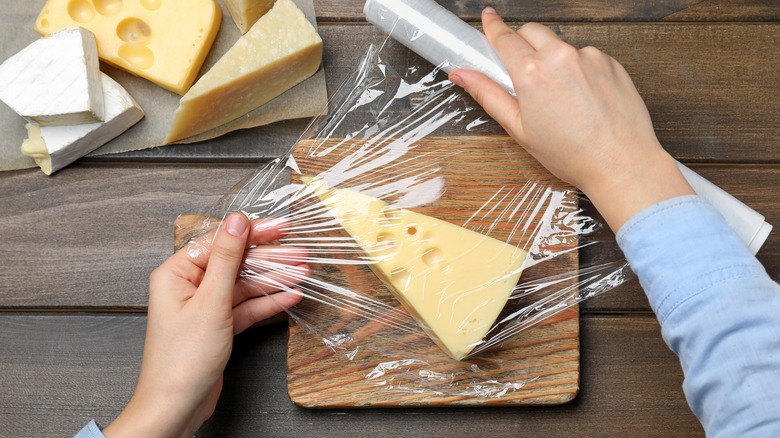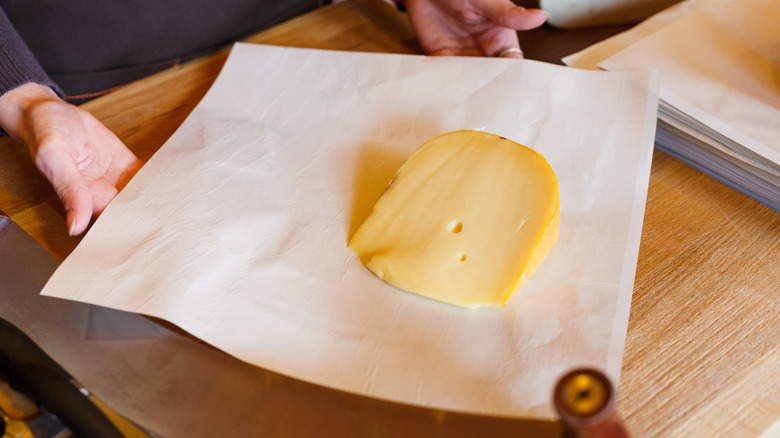Plastic Wrap Isn't Your Friend When Storing Cheese
With food prices these days, it's important that you're getting the most out of your grocery store purchases — and that means correctly storing food. Proper food storage is essential for food safety reasons, but it also determines the flavor and texture of certain ingredients, as well as the shelf life. Cheese, for example, is a lot pickier about its preferred storage methods than you might think.
When it comes to cheese, you likely think of one easy hard-and-fast storage rule: Keep it in the refrigerator. However, there are other elements to cheese storage you could be overlooking, including the best way to wrap it. And if you reach for that Saran wrap as you're getting ready to put your cheese away, you might want to think again. It turns out removing the cheese's access to air could actually be causing harm to your dairy product — here's the best way to store it instead.
Wrapping your cheese in plastic affects its taste
This might sound silly, considering so much of the cheese we purchase is ... wrapped in plastic. Those refrigerated grocery store shelves are loaded with shredded cheese in plastic, cubed cheese in plastic, and so on. However, you probably also notice a distinct quality difference in cheese you purchase off a store shelf compared to cheese that's carved right off the wheel from your local cheesemonger.
Cheesemonger Carol Johnson told Food & Wine that cheese wrapped in plastic could result in the plastic flavor showing up in the product, which explains the difference in quality between cheese sold in plastic versus purchased from a cheesemonger. "Cheese is a living thing, so you have to wrap it in something that is breathable," Johnson says as well; wrapping cheese in tight plastic not only affects its flavor but also its ability to release its natural gases. Plus, it leaves no room for oxygen to get in.
What should you wrap cheese in?
For the best storage and flavor profile, use cheese wrap to store your cheese. It's essentially a cellophane or parchment wrap that has two purposes: It allows the removal of moisture and gas while the cheese is stored and simultaneously lets oxygen in, which helps the outside of the cheese's ripening process.
The type of wrap you use depends on the kind of cheese you're storing. For example, you can buy cheese wrap designed for moldy cheese, which offers a less porous wrap so that little oxygen gets in, but gases can still escape. If your cheese is a washed rind and stored in a more humid environment, you'll want a more porous wrap because you'll need additional moisture to escape. In addition to cheese wrap, cheese prefers a humid environment to a dry one, so store your fresh cheese in the vegetable crisper drawer, which is the most humid part of your refrigerator.


